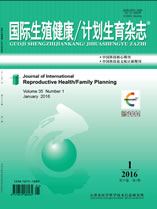|
|
Research Progress of Glucose Metabolism of Oocytes
JIANG Xin;XU Yang
2016, 35 (4):
295-298.
The developmental competence of oocyte is influenced by its growth microenvironment, which is one of the research hotspots in human reproduction medicine. Cumulus cells, follicular fluid and others, are closely related with oocyte development and maturation by making up the microenvironment of oocyte, providing metabolic substances required for oocyte, and by secreting some hormonal substances and cell activation factors. Therefore, this microenvironment is very important for the growth and development of oocyte, which is related with the quality of oocyte. There are a lot of researches on the microenvironment of oocyte. However, due to limitations of scientific technology and ethics, we know little about the metabolism of oocytes own, which is related with its microenvironment closely. A better understanding of oocytes own metabolic processes, we can understand how the growth microenvironment of the oocyte contact with oocyte, and how it affects the regulation of growth and development of oocytes. In this review, we try to introduce the glucose metabolism in oocyte, including four aspects: glucose transport, metabolic pathways, metabolic enzymes and the relationship between glucose and quality of oocyte.
Related Articles |
Metrics
|

